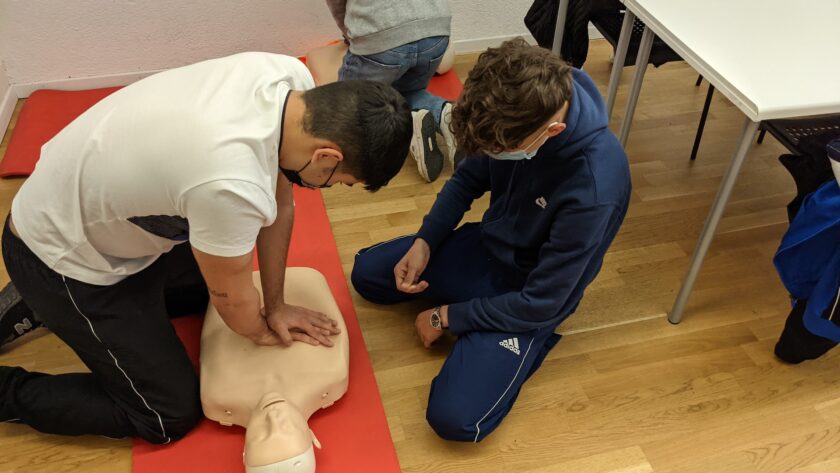First aid training is crucial for workplace safety because accidents and emergencies can happen at any time, and having trained personnel on hand can mean the difference between life and death. In a workplace setting, accidents can range from minor cuts and bruises to more serious incidents such as cardiac arrest, severe burns, or head injuries. Having employees who are trained in first aid can help prevent these incidents from becoming more serious and can also ensure that proper medical attention is given until professional help arrives.
What Does First Aid Training Involve
First aid training typically involves a combination of theoretical and practical learning. Theoretical learning includes understanding the principles of first aid, the anatomy of the human body, and common injuries and illnesses that may occur in the workplace. Practical learning involves hands-on experience in administering first aid, such as bandaging wounds, administering CPR, and treating burns and fractures. First aid training may also include training on how to use first aid equipment, such as automated external defibrillators (AEDs) and first aid kits.
Training can be provided offsite at a training facility, or onsite first aid training can be provided, which can be particularly useful if the training may be customized to address specific hazards and risks unique to your work environment. First aid training can also cover how to recognize and respond to specific medical emergencies, such as heart attacks or seizures.
Why Is It So Important?
First aid training equips employees with the necessary skills and knowledge to respond quickly and effectively to an emergency, reducing the severity of injuries and potentially saving lives, and here’s how:
Promotes A Safer Work Environment
First aid training is not only about responding to emergencies but also about preventing them from happening in the first place. By providing employees with the skills to identify and prevent potential hazards in the workplace, first aid training can significantly reduce the likelihood of accidents and injuries occurring.
This knowledge can include identifying hazards such as slippery floors, loose cables, and sharp objects, as well as teaching employees how to use equipment safely and follow established protocols. Creating a safer work environment not only protects employees from harm but also benefits employers by reducing the risk of workplace accidents, which can lead to lost productivity, increased insurance premiums, and legal action.
Reduces Severity Of Injuries
In the event of an accident or emergency, the speed and effectiveness of the initial response can make a significant difference in the severity of the injury. This is where first aid training plays a crucial role. Trained employees can provide quick and appropriate care in the event of an emergency, reducing the severity of injuries and potentially saving lives.
For example, providing immediate care for a bleeding wound can help reduce blood loss and prevent shock, which can be life-threatening if left untreated. By knowing how to properly assess and treat injuries, employees can prevent minor injuries from becoming more severe and potentially avoid long-term health problems.
Increased Employee Confidence
When employees are trained in first aid, they are equipped with the knowledge and skills to respond quickly and appropriately in the event of an emergency. This training can help employees feel more confident and in control in the workplace, reducing stress and anxiety that can come with accidents and emergencies.
This increased confidence can also lead to a more positive work environment, where employees feel empowered and supported. In addition, when employees feel confident in their ability to respond to emergencies, they are more likely to take proactive steps to prevent accidents from happening.
Compliance With Regulations
In many countries, employers are legally required to provide first aid training to their employees. These regulations are in place to ensure that workplaces are safe and that employees are equipped with the skills and knowledge necessary to respond to emergencies. Failure to comply with these regulations can result in fines, legal action, and even workplace closures.
By providing first aid training to employees, employers can ensure compliance with these regulations and avoid the potential consequences of non-compliance. Furthermore, providing first aid training to employees demonstrates a commitment to their safety and well-being, which can boost employee morale and loyalty.
Saves Lives
In the event of a medical emergency, providing immediate care can make all the difference in saving someone’s life. Trained employees are equipped with the necessary skills and knowledge to act quickly and effectively in an emergency, potentially saving the life of a coworker, customer, or anyone else in the vicinity. This can be particularly critical in workplaces where accidents are more likely to occur, such as construction sites or factories. By providing first aid training, employers are investing in their employees’ safety and well-being and demonstrating a commitment to creating a safe and secure workplace.
Mitigates Cost
Workplace injuries can result in significant medical expenses, lost workdays, and workers’ compensation claims. These costs can add up quickly and have a significant impact on a company’s bottom line. By providing first aid training, employers can help reduce the risk of accidents and injuries and minimize the financial impact when accidents do occur.
Moreover, trained employees can respond quickly and effectively to an emergency, potentially minimizing the severity of a work injury and reducing the need for costly medical interventions. In this way, first aid training can help businesses save money and resources while promoting a safer and more secure workplace for all.
In conclusion, providing first aid training to employees is crucial for workplace safety. It can promote a safer work environment, reduce the severity of injuries, increase employee confidence, ensure compliance with regulations, save lives, and mitigate the financial costs associated with workplace accidents and injuries.
By investing in first aid training, employers can create a safer and more secure workplace for their employees, which ultimately benefits both the company and its workers. Ultimately, first aid training is an essential component of any workplace safety program and should be prioritized by all employers who care about the well-being of their employees.





